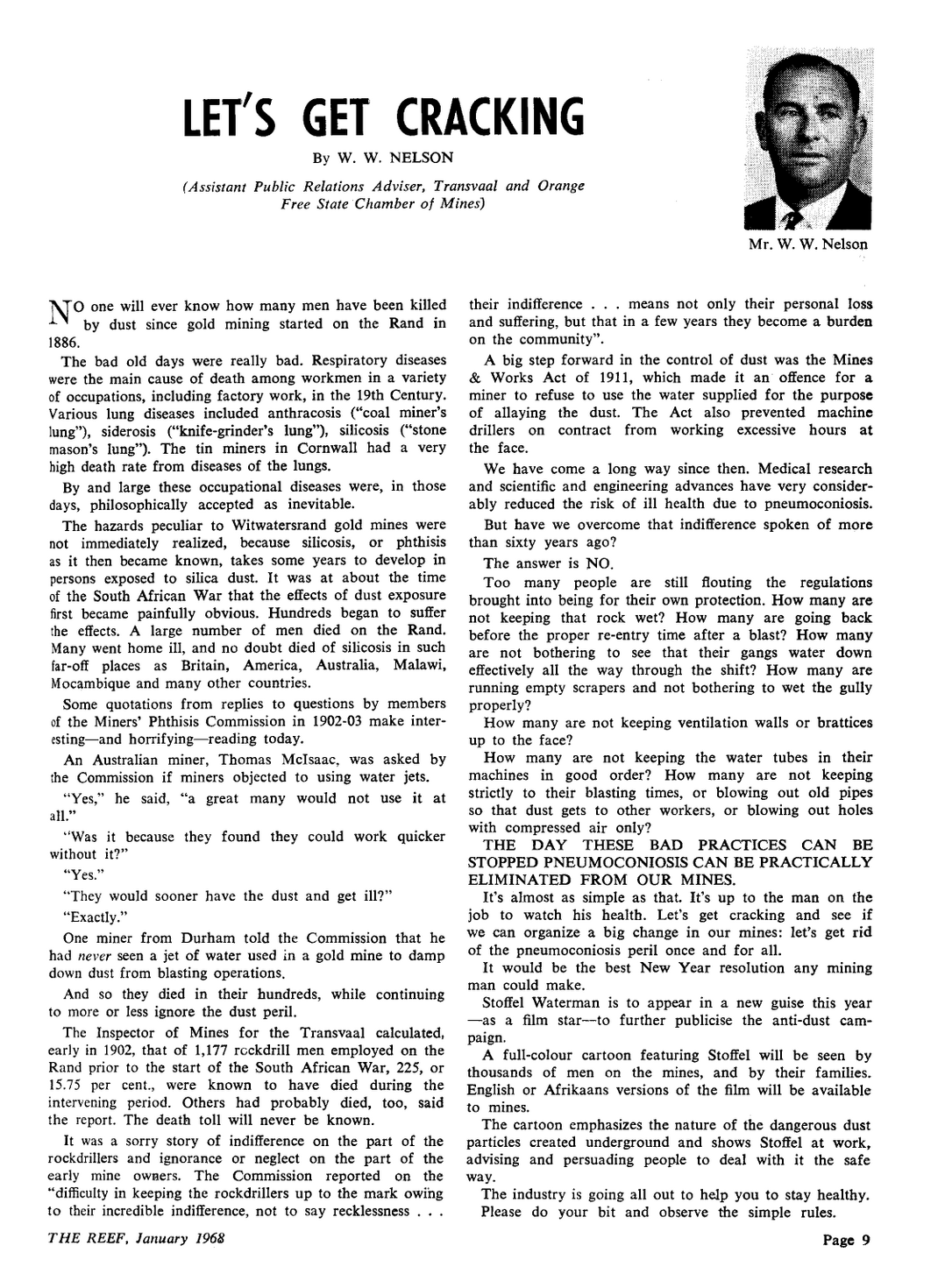The Health of Miners
Hannah George
I took a look at an interesting 1968 document entitled "Let's Get Cracking," by W.W. Nelson, the Assistant Public Relations Adviser for Transvaal and Orange Free State Chamber of Mines (upon my own searching, I discovered this to be based in Johannesburg, South Africa). The document is a sort of open letter pleading for workers in mines to practice using water jets to settle dangerous dust particles and prevent inhalation. The author cites anthracosis, or "coal miners lung," silicosis, or "stone mason's lung," siderosis, or "knife-grinder's lung," and pneumoconiosis as the many hazards of dust exposures. He bemoans the tendency of miners to skip using the water jets for the sake of efficiency, and cites one source that claims that miners would "sooner have the dust and get ill" than slow down work with these safety practices.

There are a number of themes that I find particularly telling; first, the article is directed at miners themselves, rather than industries or supervisors in mining. Indeed, the issue seems to be largely construed as resting squarely on the shoulders of miners-- the author writes, "It's almost as simple as that. It's up to the man on the job to watch his health." Without knowing the context of the industry at this place and time, I'm curious what the role of the author's employer, the Transvaal and Orange Free State Chamber of Mines, was in pushing responsibility onto the miners (that organization has since been replaced by the Minerals Council South Africa, which still serves to protect the mining industry, according to my brief research). Was this focus on the miners' behavior a more convenient way to address illness that shirked blame away from management? Or was this a legitimate strategy?
It further seems odd that miners would "sooner have the dust and get ill" than take these safety measures. For me, this opens two possibilities: first, that this claim is false, and perhaps reflects somewhat nefarious efforts to keep blame on miners rather than on management (e.g. were water jets being provided, what was the role of leadership, were miners truly rejecting the use of water or were they simply not informed or equipped?). Or, secondly, perhaps conditions were so difficult that miners really were so desperate for increased productivity (and presumably pay) or quicker shifts that they were willing to inhale more dust. If the latter were true, one must wonder why the companies were not ameliorating these circumstances if they truly were so concerned about illness, or if the miners were truly informed of the dangers. Put plainly: if miners' dangerous behavior was borne of desperate commitment to efficiency or from ignorance, are not both of these still rooted in problematic practices from the employers? While we are left with more questions than answers from this document without further research, the general "Let's Get Cracking" attitude directed at miners' behavior from a representative of industry interests should raise some suspicions regarding the true aims of this call to action.
